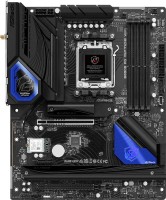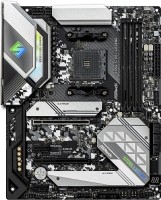Motherboards ASRock series Steel Legend (gaming)
prices on 21 modelASRock Steel Legend (gaming)
In the assortment of the Taiwanese brand ASRock, you can find more than a dozen different lines of motherboards, but the Taichi, Extreme, Phantom and Steel Legend series enjoy the greatest attention from the public. The first two include the most top-end products and are focused, rather, on enthusiasts and hardcore gamers, while Steel Legend is more related to the medium and even low-cost segment. Many models were based on chassis from Phantom boards, which were then painted, power stabilizers were changed and prices were slightly reduced.
 |
As the name of the series suggests, the main distinguishing feature of these gaming boards are reliable PCI-E and M.2 slots with metal plating. And if in the case of M.2 and DDR, metal plating seems superfluous — after all, the RAM and NVMe SSD slats weigh little — then in the case of video cards this is more than justified.
The current flagship cards of the GeForce RTX 3070 level occupy almost three slots in the system, stick out along the length of the entire case and weigh one and a half kilograms. That is, breaking out a flimsy slot with an unsuccessful installation is not a problem for her at all.
Due to the desire to squeeze the most out of every penny spent, Steel Legend boards often flash in thematic collections for thrifty gamers who do not plan to squeeze all the juices out of the system during overclocking. It is clear that 4K is coming on all fronts, but as the statistics of Steam, Epic and Origin stores show, most gamers prefer network toys a la CS:GO, COD, FIFA and Dota 2, in which graphics play a third-rate role. For such an "ordinary" gaming computer, the Steel Legend board will go with a bang, especially when paired with some inexpensive, but well-proven processor like the Ryzen 2600 and an RX 580 or GTX 1060 Ti graphics card. The ratio between the price and performance of such an assembly can pleasantly surprise.













